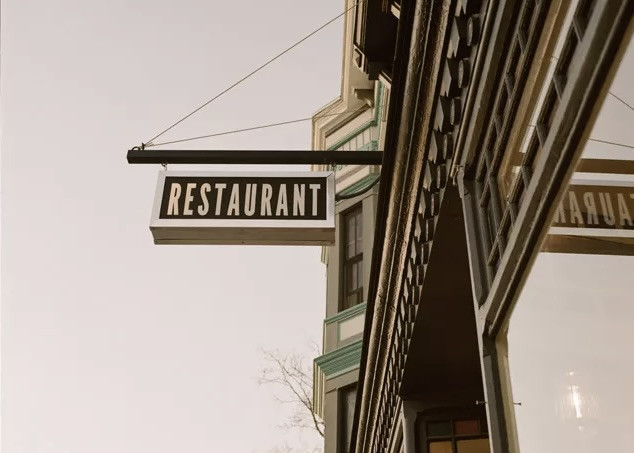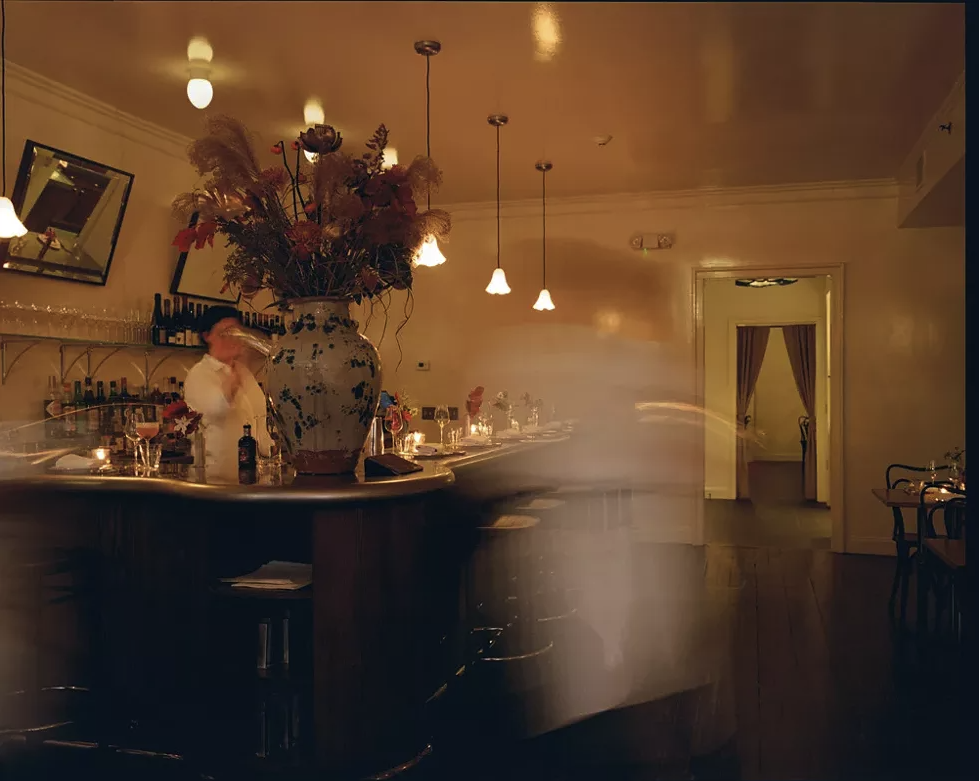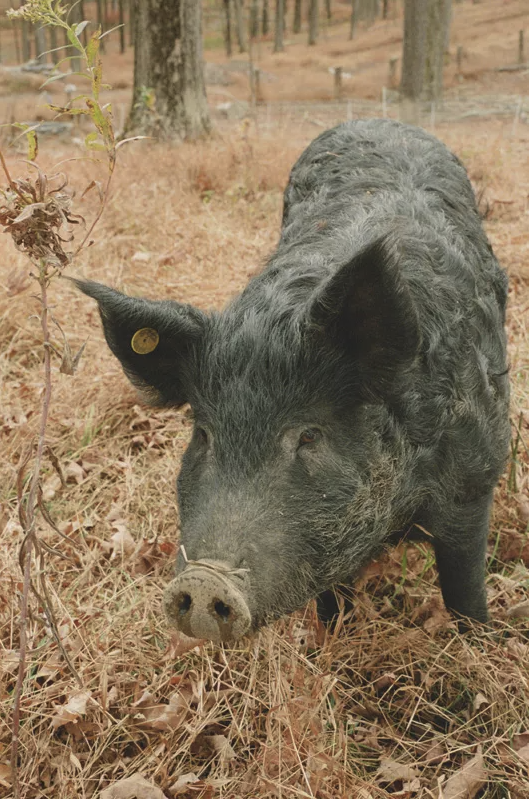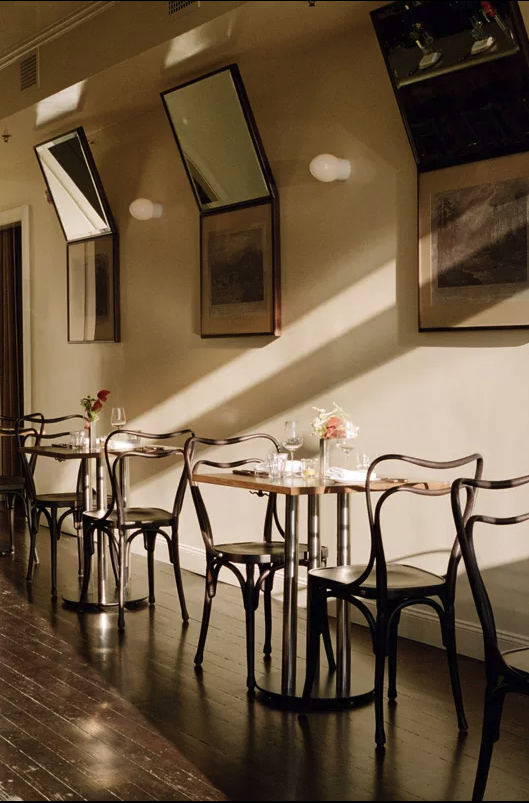Hudson's Manor Rock is a Restaurant, Farm and Philosophy
A new restaurant with its own farm enters the crowded field of Hudson's culinary scene.

A new restaurant with its own farm enters the crowded field of Hudson's culinary scene.
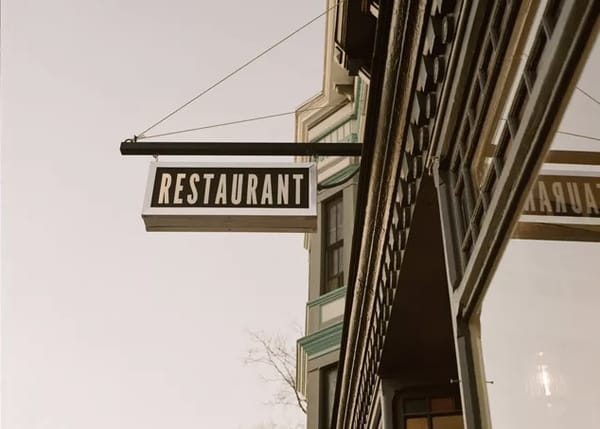
Photos courtesy of Manor Rock.
It all started with a Google Doc.
Before Manor Rock was a working farm, before it was a restaurant, before there were pigs and chickens and ducks, greenhouses, and culinary ambitions, Zack Nussdorf and Ivy Nallo were living in New York City, trading restaurant recommendations and building a relationship. Though the two were in the same year at Bard, they connected after graduation, bumping into each other at Frenchette in Tribeca. Realizing they lived in the same area, they exchanged numbers. “It was always about food and wine together,” Nallo recalls.
Nallo, an art history graduate, was working in production at Chanel, while Nussdorf, with a background in comparative literature and philosophy, had transitioned from teaching high school to private tutoring, but was gravitating toward food. He started working in the kitchen at Four Horsemen (the wine bar founded by LCD Soundsystem frontman James Murphy), learning the rhythms of restaurant life, and getting deeply immersed in the city's greenmarkets.
When the pandemic hit, the couple had already been spending weekends upstate, getting familiar with more of the Hudson Valley and the Catskills. When they stumbled across a sprawling property in East Taghkanic with 180 acres of forest and forgotten gardens, a massive pond and an old house—they saw potential. “It had a massive pond and a lot of acreage, the house had this really fun 1980s Laura Ashley wallpaper,” Nallo says. “It was a gem. You could tell someone really loved it, and it still had a lot of the old bones, but it had sat vacant for a few years. Mice had chewed through the appliances. The previous owner was a gardener and seven acres of the property had different gardens with fruit trees. They had fallen apart but the structure was still there. We felt an obligation to put life back into it.”

The land came with its own responsibilities. There were invasive species to manage, deer and turkey populations to keep at bay, and gardens to restore. “It became clear to us that there was so much we needed to do to protect the ecology of the property,” Nussdorf says. They consulted area farmers and foresters, ethnobiologists and engineers for suggestions on how to improve the property and put nutrients back in the soil. Nallo even started a graduate program in landscape design at Harvard in 2021, but stopped after a year to fully concentrate on the farm. “I took a leave of absence because we got pigs,” she says. “I wanted to give developing the farm a chance.”
The work of clearing, replanting, and shaping the landscape was both practical and deeply philosophical—a way of engaging with what had been, while making space for what could be. “It honestly started as a Google doc with loose goals,” Nallo says.
They started with five pigs, assuming that would be manageable. They were wrong. The pigs were well-suited to the climate but highly intelligent escape artists. Early on, with no UTV and makeshift fencing, the couple struggled. “We were wheelbarrowing food and water to them,” Nussdorf says. “Early on, I would cook 50 pounds of potatoes and feed it to them. Now we have a three-ton grain bin of organic feed that we ferment.” Growing vegetables, they quickly realized, was even harder. “There’s more technique,” Nussdorf says. “On a culinary level, you want to grow all these things that require a lot of knowledge. But you need to grow tomatoes for years before you really understand it.”
Since starting in 2021 with a handful of ducks and a kitchen garden, they’ve scaled into a full-blown, 45-acre farm with a one-acre fruit and veggie garden plus a silvopasture operation for pigs, ducks, and chickens plus high tunnels and greenhouses. The process has had its own learning curve, as the couple learned about crop planning and production, calculating bed space and yields, caring for animals, and regenerating soil.
“It’s a learning experience—you’re figuring out your own land,” Nallo says.
“We really thought we’d have a small garden, our animals, and some small-scale hospitality project—like tasting dinners for 12 people,” recalls Nussdorf. “We realized that there’s not a huge jump from that to doubling down and having a small commercial farm.”
This year, they hired full-time production manager Enya Cunnigham, previously of the Hungry Reaper Farm, to lead the vegetable program and are continuing to refine their methods. The goal was always quality over quantity. “We’re growing food with an attention to size and flavor rather than just yield,” Nussdorf says. “We’re setting up the system for the best possible culinary conclusion.”
It took a while for that conclusion to come to light, but when their realtor informed them that the building that previously housed Hudson Food Studio on Warren Street was for sale, they jumped at the opportunity to create a restaurant to showcase Manor Rock’s products. “The building was one of our favorites in Hudson,” Nallo says. “It has this wonderful hidden courtyard in the back.”
The building’s long history includes stints as a bakery, an antiques store, and a couple of restaurants. They had sat in that courtyard of the Food Studio often, envisioning future possibilities. “It was really fun for us to get in there and do something similar to what we did to the farm,” Nallo says, “It was like giving the building what it wanted again. All these old buildings have such a long life that we don’t even know about. So when we come into a space, we spend a lot of time listening, looking, and try to make small incisions where needed without being too heavy-handed.”
With a mix of reverence and reinvention, and support from interior design firm Charlap Hyman and Herrero, they stripped down layers of history without erasing them, restoring the space while adding in wood elements from the farm, as well as a sculptural bar.
Once they had the building, the couple had to come up with a culinary concept more nuanced than the played out “farm-to-table” label. “I started to look at the food climate in Hudson,” says Nussdorf, who serves as culinary director for the restaurant and liaison with the farm. “We wanted to have the challenge of doing more nutritious food, bringing the technique up a bit in Hudson. We’re committed to Hudson and to the team we’re bringing in.” With farm-fresh produce and meat, chef de cuisine Diego Romo who came from New York City to join the project, and four other chefs de partie, Nussdorf and Nallo put together a rock solid foundation for their restaurant. “Everyone is learning every station,” Nussdorf says of the restaurant’s kitchen. “I think it leads to the development of better chefs.”
The menu at Restaurant Manor Rock, which opened at 746 Warren Street in late October, is shaped by the farm’s harvest and supplemented by sustainably sourced seafood and produce. “We aren't insisting that everything come from Manor Rock, but rather all ingredients can stand on their own and are from reputable sources with similar sustainable approaches to farming,” Nussdorf says. “We focus on whole animal butchery—across both farmed livestock and seafood. The restaurant is a point for us to gain connections with other farmers, wine makers, fishermen, etc.”
Chicories, collards, broccoli, and tender young lettuces are currently making their way from the soil to the plate, shaping a lineup of vibrant salads, small plates, and hearty entrées. As of publication, the menu (which changes regularly) includes chicories dressed up with juicy satsumas, candied pecans, a kick of horseradish, and a dusting of pecorino sardo ($24). Or the house-made Manor Rock sausage, which is paired with delicate baby pak choi and velvety bay leaf pomme purée ($42). Butter beans arrive swimming in a smoky broth with bacon, chermoula, and grilled bread ($22), while grilled sunchokes, glazed with white miso, get a luxurious finish of carrot velouté and hazelnuts ($28). For something rich and comforting, there’s young pork confit with mirepoix and peppery watercress ($44) or grilled duck breast, kissed with dried citrus and served alongside earthy beets and hoshigaki ($52).
Desserts are just as tempting, with options ranging from grilled apple cake ($18) to bright blood orange and pink peppercorn sorbet ($12) and an intriguing caramelized white chocolate and tamari ice cream with a chocolate buckwheat crumble ($10).
On the drink front, the cocktail list leans into complexity and balance. The Figaro combines apple brandy, both sweet and dry vermouth, and bitters ($16), while the Ernest offers a smoky, citrusy mix of mezcal, Menaud aperitif, fermented togarashi, bergamot, and lime ($16). Even the non-alcoholic options bring something special—think a zero-proof spritz or a mezcal negroni-inspired creation (both $12). An extensive wine list, curated by Nussdorf, is also available. But you’re in the mood for something else, there’s beer, French press coffee, and a thoughtfully curated selection of teas, including blends crafted with Raven Crest Botanicals.
Nussdorf is committed to elegance in flavor, but not at the expense of warmth or approachability. “It’s not overly precious, but it’s allowing the quality of the ingredients to shine through,” he says. “We want to celebrate the work and the produce. I think we’re delivering really elegant flavors.”
Manor Rock is a project built on respect—for the land, for the ingredients, for the team. It’s an ongoing study in thoughtfulness. “We moved upstate because we wanted to focus more on our life outside work,” Nallo says with a laugh. “which is ironic because our life is our work now. We work all the time, more than ever. But it’s such a dynamic project.”
